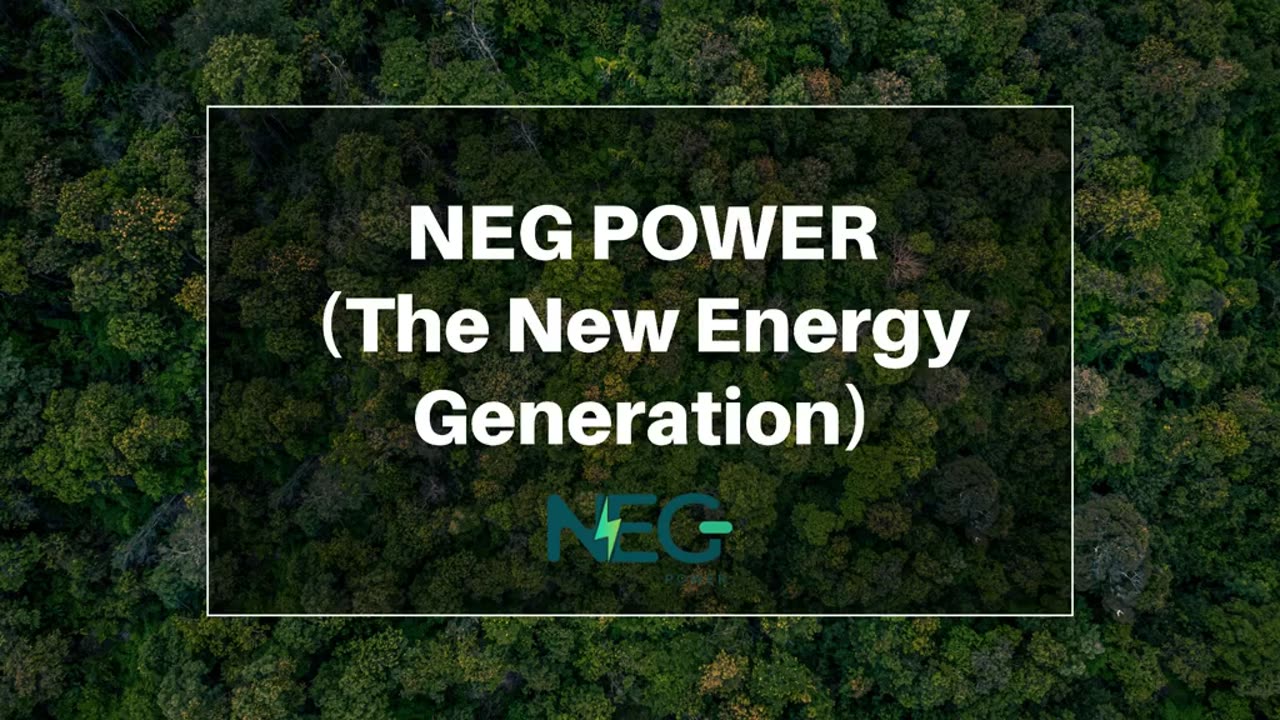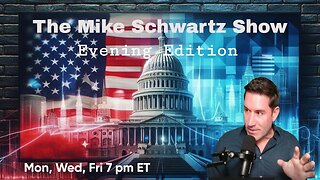Premium Only Content

Beyond Solar Panels: Integrating ESS for True Renewable Energy Self-Sufficiency-NEG Power
For years, solar panels have been celebrated as the cornerstone of renewable energy adoption. By capturing sunlight and converting it into electricity, they provide homeowners, businesses, and even industries with a greener alternative to fossil fuels. Yet, while solar panels mark a vital step toward sustainability, they are not the complete answer to energy independence. The sun doesn’t shine 24/7, and fluctuations in demand often mean that renewable generation alone cannot guarantee uninterrupted power.
This is where Energy Storage Systems (ESS) come into the picture. ESS bridges the gap between generation and consumption, allowing excess renewable energy to be stored and deployed when needed. Integrating ESS with solar panels — and even complementing them with technologies like the EV Charger Singapore — is redefining what true renewable energy self-sufficiency looks like.
The Limitation of Solar Panels Alone
Solar panels excel during sunny days, especially at peak noon hours when sunlight is abundant. However, energy consumption patterns don’t always align with solar generation. Most households, for instance, consume more electricity in the evenings when solar production has already diminished. Without a storage solution, this mismatch forces users to rely on the grid, which is often powered by fossil fuels.
Furthermore, grid instability, rising electricity prices, and increasing energy demand make dependence on panels alone insufficient for achieving real autonomy. The solution lies in capturing excess solar output and storing it for later use — ensuring reliability, stability, and efficiency.
What Is ESS and Why It Matters
Energy Storage Systems (ESS) are designed to store electricity when production exceeds consumption and release it when the demand surpasses supply. Lithium-ion batteries, the most widely used ESS technology today, are capable of storing large amounts of energy with high efficiency.
By integrating ESS with solar panels, renewable energy moves from being intermittent to being continuous. It allows homeowners and businesses to manage their energy use proactively rather than reactively. ESS ensures that the clean energy harvested during the day powers homes, offices, and even electric vehicles at night.
Components of an Integrated Solar + ESS Setup
Solar Panels — Harvest sunlight and generate electricity.
Inverter — Converts DC (direct current) from panels into AC (alternating current) usable by household or business appliances.
ESS (Battery Storage) — Stores surplus energy during high solar production.
Energy Management System (EMS) — Smart software that optimizes when to store, consume, or sell back electricity to the grid.
EV Charger Integration — Provides a direct pathway to use stored renewable energy for charging electric vehicles.
This integration creates a self-sustaining ecosystem where renewable energy powers not only homes and businesses but also personal mobility.
ESS and the Path to Self-Sufficiency
Self-sufficiency in energy means generating and storing enough electricity to minimize reliance on the grid. With solar + ESS integration, users can:
Power Through the Night: ESS stores daytime surplus for nighttime use.
Reduce Grid Dependency: Less reliance on fossil-fuel-heavy grid energy.
Save Costs: Store energy during low-demand hours and use it during peak pricing.
Enable Resilience: ESS provides backup during blackouts, keeping critical systems online.
True renewable independence lies not in just producing energy but in being able to control when and how it is used. ESS unlocks this potential.
The Role of EV Chargers in Renewable Integration
Electric vehicles (EVs) are transforming transportation, but their sustainability hinges on how they are charged. Charging an EV with grid electricity powered by fossil fuels only shifts emissions rather than reducing them. However, when solar panels and ESS are paired with an EV Charger, the equation changes dramatically.
Green Charging: Instead of relying on grid electricity, EVs can be charged with stored solar power.
Load Balancing: Smart EV Chargers can optimize charging times to coincide with off-peak demand or maximum solar output.
Vehicle-to-Home (V2H) and Vehicle-to-Grid (V2G): Future-ready EV Chargers enable EVs to act as mobile energy storage units, feeding power back into homes or the grid when required.
By integrating ESS and EV Chargers Singapore, renewable energy ecosystems extend beyond buildings and into transportation, creating a holistic sustainable lifestyle.
Advances in ESS Technology
As demand for renewable integration grows, ESS technology is rapidly advancing:
Lithium-Ion Batteries: Currently the most popular, offering high efficiency and scalability.
Solid-State Batteries: Emerging technology promising higher energy density and safety.
Flow Batteries: Ideal for large-scale storage, with longer lifespans and easy scalability.
Hybrid Systems: Combining different storage technologies to balance cost, performance, and durability.
Each innovation pushes renewable adoption closer to mainstream, affordable energy independence.
Smart Energy Management: The Brain of the System
Energy self-sufficiency isn’t only about storage — it’s also about optimization. Smart Energy Management Systems (EMS) are critical in orchestrating when solar energy should power appliances, charge ESS, or supply the EV Charger.
Features of EMS include:
Predictive Usage: Algorithms anticipate consumption patterns and weather forecasts.
Dynamic Control: Automatically adjust loads to maximize efficiency.
Grid Interaction: Decides when to feed surplus energy back to the grid for incentives.
This intelligence ensures users get maximum benefit from their renewable setup.
Benefits for Homeowners and Businesses
For Homeowners
Lower utility bills through reduced grid reliance.
Reliable backup during power cuts.
Sustainable EV charging with home-based renewable sources.
Increased property value as energy-efficient homes are in demand.
For Businesses
Operational continuity with backup during outages.
Predictable energy costs, reducing exposure to rising electricity prices.
Corporate sustainability goals achieved with measurable carbon footprint reduction.
Ability to integrate renewable-powered EV Chargers for company fleets.
Policy and Market Support Driving ESS Adoption
Governments worldwide are recognizing the transformative role of ESS in renewable adoption. Incentives such as subsidies, tax credits, and favorable net-metering policies are driving adoption. Businesses and individuals investing in ESS often benefit from lower payback periods and higher ROI thanks to these initiatives.
At the same time, the falling cost of battery technology is making ESS more accessible. Just as solar panels became affordable over the last decade, ESS is on a similar trajectory.
The Road Ahead: Toward True Energy Independence
As energy demand grows and climate concerns intensify, the future will increasingly lean on integrated renewable ecosystems. Solar panels may be the starting point, but ESS ensures continuous reliability. With the addition of smart technologies like EV Chargers, renewable energy doesn’t just stop at powering homes — it powers mobility, businesses, and even entire communities.
True self-sufficiency isn’t about cutting off the grid entirely but about reducing dependence while maximizing autonomy. By combining solar panels, ESS, and EV Chargers Singapore, individuals and businesses can finally take full control of their energy future.
Solar panels alone laid the foundation for clean energy adoption, but the path to complete renewable independence requires more. Energy Storage Systems (ESS) transform intermittent solar into a stable, reliable source of electricity. When paired with smart energy management and integrated with technologies like the EV Charger, ESS takes renewable adoption to the next level.
The future of energy lies in synergy. Solar panels generate, ESS stores, and EV Chargers Singapore extend this power into transportation. Together, they redefine sustainability — not just as an environmental choice but as a practical, economical, and resilient way of living.
Beyond solar panels, integrating ESS is the key to true self-sufficiency — ushering in an era where clean energy isn’t just an option but a complete lifestyle.
Visits us : https://www.negpower.sg/
-
 1:03:04
1:03:04
BonginoReport
3 hours agoBomb Squad Investigates Package at TPUSA HQ - Nightly Scroll w/ Hayley Caronia (Ep.136)
157K43 -
 1:23:11
1:23:11
Kim Iversen
4 hours agoDennis Kucinich Exposes 9/11 Israel's Lies
72K100 -
 LIVE
LIVE
The Mike Schwartz Show
3 hours agoTHE MIKE SCHWARTZ SHOW with DR. MICHAEL J SCHWARTZ 09-17-2025
4,201 watching -
 LIVE
LIVE
Mally_Mouse
20 hours ago📣Telescreen Talks - LIVE!
184 watching -
 LIVE
LIVE
Quite Frankly
6 hours agoPsychotic Voices from Another World, Part 2 | Jerry Marzinsky & Judy Gregerson 9/17/25
650 watching -
 LIVE
LIVE
SpartakusLIVE
2 hours agoTower DOMINATION, Specialist, and INFINITE Dubs || Duos w/ Twitty , Quads Later w/ The Boys
210 watching -
 7:04:40
7:04:40
Dr Disrespect
8 hours ago🔴LIVE - DR DISRESPECT - ARENA BREAKOUT: INFINITE - ESCAPE OR LOSE EVERYTHING!
126K4 -
 LIVE
LIVE
SavageJayGatsby
1 hour ago📣Telescreen Talks - LIVE!
82 watching -
 1:07:53
1:07:53
TheCrucible
3 hours agoThe Extravaganza! EP: 38 (9/17/25)
114K16 -
 1:12:15
1:12:15
Candace Show Podcast
3 hours agoWho Ordered The Hit On Charlie Kirk? | Candace Ep 237
77K267